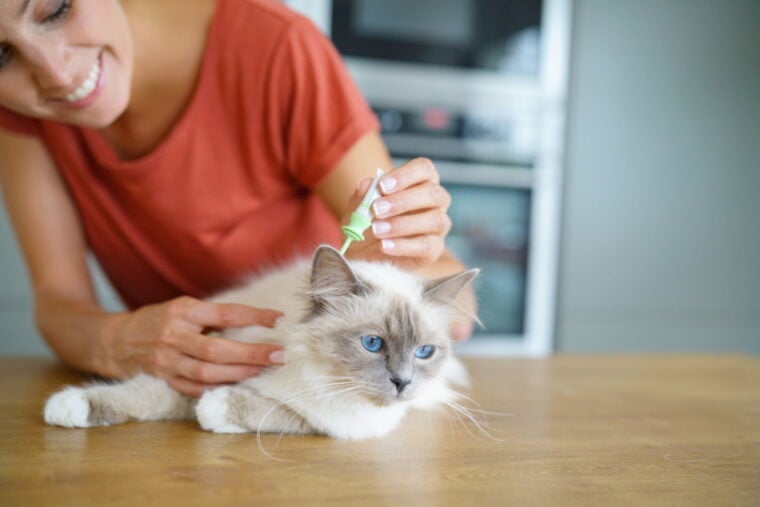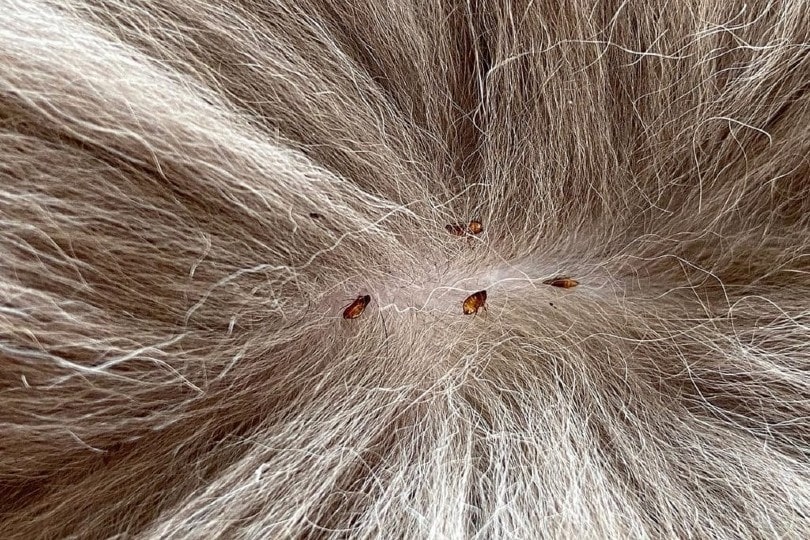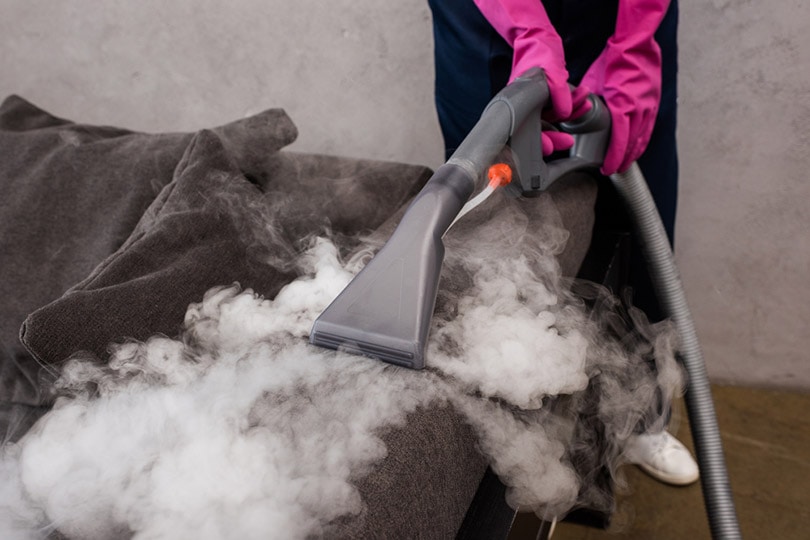
Click to Skip Ahead
Disclaimer: The information about these products has been fact-checked by one of our licensed veterinarians, but the purpose of this post is not to diagnose illness or prescribe treatment. The views and opinions expressed are not necessarily those of the veterinarian. We recommend contacting your pet’s veterinarian before purchasing any product from this list.
Fleas can be a nuisance and make your kitten uncomfortable and itchy, but they can also be dangerous; a severe case of fleas can result in illness and blood loss. The treatment can also be more complex, depending on the age and weight of your kitten, as many options are unsuitable for kittens under 8 weeks old. Additionally, fleas have a complex lifecycle, so getting rid of them completely takes time.
So, how exactly do you get rid of fleas in the quickest and most efficient way? We’ll discuss the safest way to treat fleas on kittens and how to lower the chances of it happening again, so keep reading!
How to Tell Your Kitten Has Fleas

A few apparent signs have probably caught your attention: your kitten is restless and itchy, and their skin might look irritated and red. The first place to start if you suspect your kitten has fleas is to check their back and neck, as fleas will be most concentrated there because your kitten won’t be able to reach them.
Start by dividing the fur and look for small black specks; you can use a fine-tooth comb to help you with this search. This could pick up fleas themselves or flea dirt, which is another word for flea poop. It’s possible you might not find any fleas themselves, so be sure to check other pets in the house if you have any. Fleas also don’t need to live on your pets to survive at all stages—when they are eggs, larvae, or pupae, they can be found around the house or even in your yard.
Whether you find fleas on your kitten or not, your next step should be to make an appointment with your veterinarian. Discussing the next step in treatment is essential because many home remedies can be unsafe, and treatment varies depending on your specific kitten.
How to Get Rid of Fleas on Kittens
Fleas can be particularly bothersome for kittens because they’re smaller; fleas feed on blood, and it can cause weakness and anemia—they can even transmit tapeworms. So, it’s important to seek treatment as soon as possible.
When treating fleas on a kitten, your options are more limited than with an adult cat; everything depends on the age and weight of your kitten. Most products that are safe for use on a kitten are suitable when they’re 8–10 weeks old or over 1.5–2 pounds. Before purchasing a commercial product, visit your vet to treat your kitten. They can provide safe medication to treat the fleas.
1. Remove Fleas From Your Kitten (under 8 weeks old)
Using a flea comb is your safest option, and you can use this once or twice a day to remove adult fleas. It will only tackle the problem of adult fleas living on your kitten.
You can also bath your kitten, but you will need to keep some things in mind:
2. Administer Flea Treatment

Your vet will recommend a suitable flea treatment once your cat is old enough. This treatment will be safe for your kitten and treat fleas at every life stage. Flea eggs can lie dormant for weeks, which means the treatment will likely cover several months to ensure your cat is always protected.
Several options are available to you, so be sure to discuss them with your vet to see which would work best. If there are multiple pets in your household, they will all need to be treated for fleas individually. It’s incredibly important to note that flea treatment for dogs is unsuitable for cats, as it can be toxic.
3. Make Sure the Fleas Can’t Come Back
After all your hard work, you want to ensure the fleas don’t have the opportunity to return. While some medications can work in a few hours, ensure you follow the instructions and continue using them for as long as recommended.
4. Treat Your Home

This is a crucial step. Fleas like to hide in the nooks and crannies that are hard to reach, like down the side of the sofa cushions, fluffy rugs, under furniture, and bedding. Concentrate on cleaning places your cat likes to sit, like their cat tree. Washing linens and bedding frequently on the highest temperature setting and vacuuming daily reduces the number of fleas in your home.
Don’t forget to dispose of the vacuum bag (once you’ve sealed it) or wash the plastic canister if you don’t have a bag. Although commercial pesticides are available to treat fleas, it’s better to hire a pest control service to keep your pets safe and prevent the fleas from returning.
Different Flea Treatment Options
Prevention is always easier than treatment and will cause the least upset for your kitten. When you get a new pet, figuring out everything they might need can be confusing and a little overwhelming. Flea treatment is crucial and is something your vet can help you with. But here’s an idea of what is out there:
The most effective way to keep your cat flea free is to invest in year-round treatment for them when they are old enough. This is important even if your cat lives indoors because fleas can access the house through other pets or humans bringing them in. Cat-safe flea collars could also help for prevention. Make sure to discuss all your options with your vet.
Final Thoughts
Getting rid of fleas can be tricky, and how you go about it will depend on the age and weight of your kitten. A few steps are involved in getting rid of these pests, such as treating all pets and your home. Treating fleas can feel like a long, ongoing process, and if done incorrectly can mean more trips to the vet and potential health risks like anemia. That is why discussing all your treatment options with your vet when you suspect your kitten has fleas is essential.
See also:
Featured Image Credit: goodluz, Shutterstock








